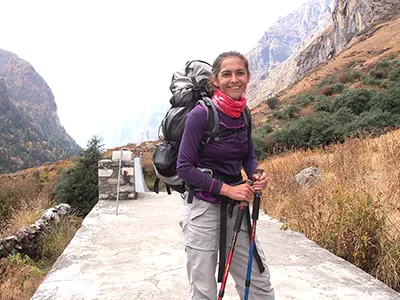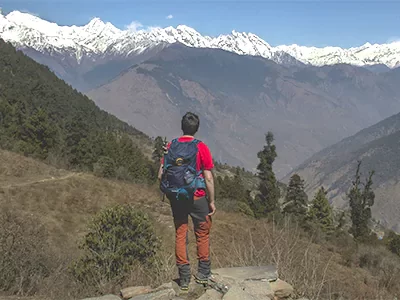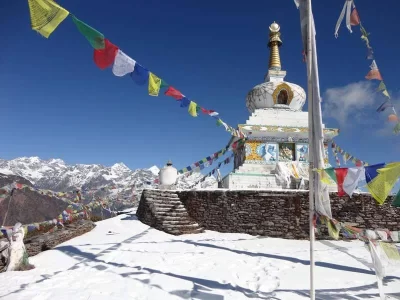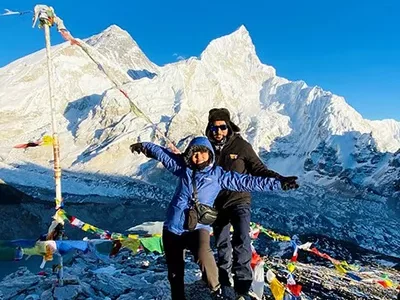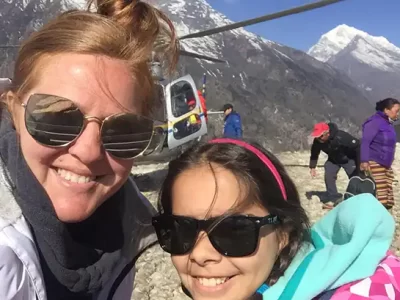The Langtang Valley Trek captivates trekkers with its stunning natural beauty, rich cultural heritage, and thrilling trails. Located in Nepal’s serene Langtang region, this trek stands out for those searching for a rewarding experience away from the crowded paths of more popular routes.
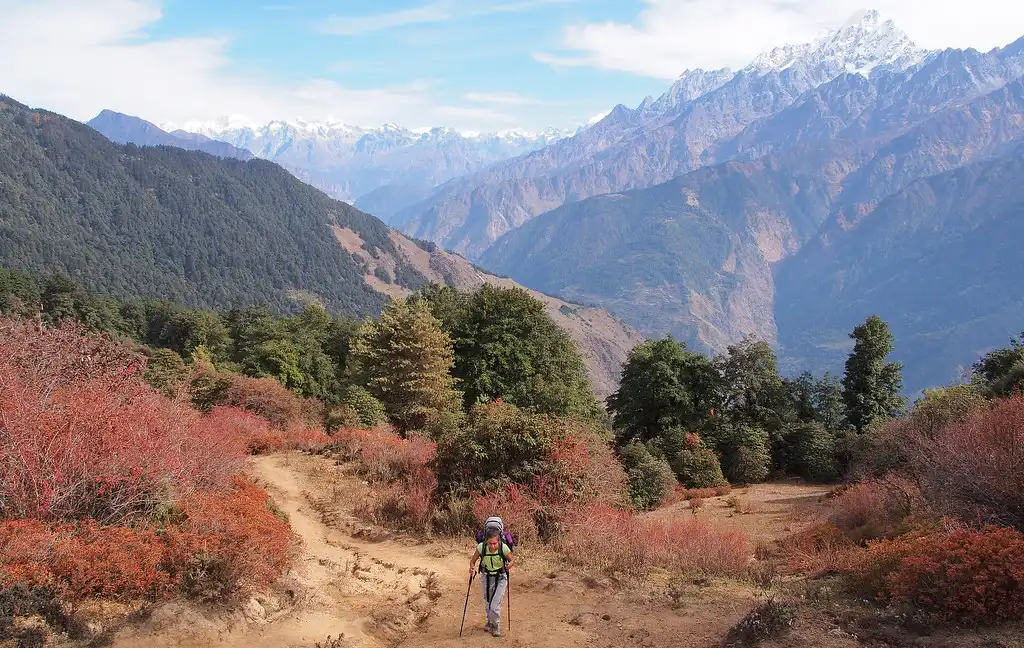
As we head into 2024/2025, the Langtang Valley Trek remains a favored choice for adventurers eager to explore breathtaking landscapes and the unique cultural heritage of the Himalayas. Starting in the quaint village of Syabrubesi, this trek serves as the gateway to the beautiful Langtang National Park.
Trek Highlights
- Kyanjin Gompa: Enjoy stunning mountain views and visit the famous monastery.
- Langtang Village: Experience the rich Tamang culture and see the village’s post-earthquake recovery.
- Tserko Ri: Hike to panoramic views at 4,984 meters.
- Langtang National Park: Explore diverse flora and fauna, including the elusive red panda.
- Gosaikunda Lakes: Visit sacred lakes revered by Hindus and Buddhists.
- Lush Forests and Alpine Meadows: Trek through varied landscapes, from dense forests to open meadows.
- Local Culture: Interact with Tamang and Tibetan communities, experiencing their unique traditions and hospitality.
Trekkers traverse diverse landscapes along the Langtang trail, from verdant forests to expansive alpine meadows, leading to the tranquil Langtang Tal. The path offers stunning views of the Langtang mountains, including the impressive Langtang Lirung, and is celebrated for its rich biodiversity, appealing to nature lovers. As trekkers advance along the Langtang circuit, they visit key locations like the traditional villages of Langtang and Kyanjin Gompa.
The trek, which ascends to heights over 4,000 meters, tests trekkers with its high-altitude challenges while offering magnificent panoramic views of the Langtang peaks. This trek allows adventurers to experience not only the region’s spectacular beauty but also the warm hospitality of the local Tamang communities, enriching their travel experience.
Langtang Valley Trek
Langtang Gosaikunda Trek
Itinerary for Langtang Valley Trek
Day 1: Arrival in Kathmandu (1,400m) – Duration: Full Day
Day 2: Drive from Kathmandu to Syabrubesi (1,550m) – Duration: 7-8 hours
Day 3: Trek from Syabrubesi to Lama Hotel (2,380m) – Duration: 6-7 hours
Day 4: Trek from Lama Hotel to Langtang Village (3,430m) – Duration: 6-7 hours
Day 5: Trek from Langtang Village to Kyanjin Gompa (3,870m) – Duration: 3-4 hours
Day 6: Acclimatization in Kyanjin Gompa (3,870m) – Duration: Full Day
Day 7: Trek from Kyanjin Gompa to Lama Hotel (2,380m) – Duration: 6-7 hours
Day 8: Trek from Lama Hotel to Syabrubesi (1,550m) – Duration: 5-6 hours
Day 9: Drive from Syabrubesi to Kathmandu (1,400m) – Duration: 7-8 hours
Day 10: Departure from Kathmandu (1,400m) – Duration: Full Day
Optimal Trekking Seasons for Langtang Valley Trek
The Langtang Valley Trek offers remarkable landscapes and deep cultural experiences, making timing your visit crucial for maximizing the trip. Each season in the Langtang region brings unique conditions that enhance or challenge the trekking experience.
Spring Season (March to May)
During spring, the Langtang Valley Trek comes alive with warming weather and the blooming of vibrant rhododendrons. This season offers clear skies and excellent visibility, ideal for panoramic views of Langtang Lirung and other Himalayan giants.
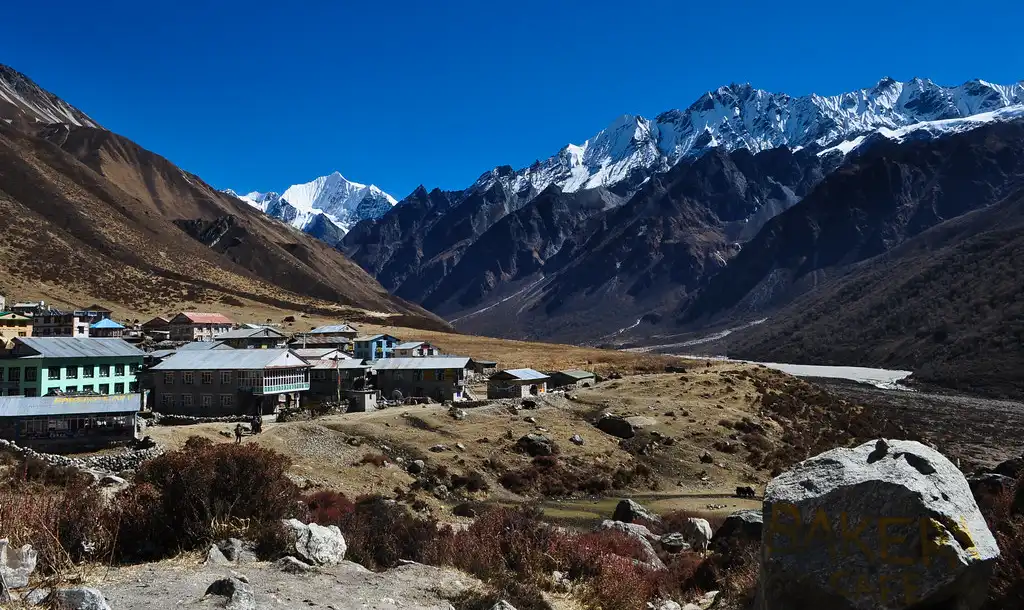
Trails dry up, creating perfect hiking conditions. Additionally, spring coincides with local festivals, offering trekkers a glimpse into the rich culture of the Tamang community in Langtang National Park.
Autumn Season (September to November)
Autumn marks a refreshing start after the monsoon rains, clearing the skies and sharpening the mountain views. Stable, mild weather makes autumn an ideal time for trekking.
The landscapes, refreshed by the monsoon, showcase lush beauty, and the clear skies ensure superb visibility. This season also aligns with significant Nepali festivals like Dashain and Tihar, providing rich cultural interactions.
Winter Season (December to February)
The winter season blankets the Langtang Valley in snow, offering a quieter and more solitary trekking experience.
The skies remain clear, but temperatures drop, especially at higher altitudes. This season is perfect for those who appreciate the serene beauty of snow-covered landscapes and can handle the cold with the right gear.
Monsoon Season (June to August)
Trekking in the Langtang Valley during the monsoon can be challenging due to heavy rains, slippery trails, and frequent leeches.
However, the rains bring a burst of lush greenery, making the waterfalls and streams particularly spectacular. This season requires robust waterproof gear and a flexible approach to manage weather-related disruptions.
Ama Yangri Trek
Everest Base Camp Trek
Everest Base Camp Trek with Helicopter Return
Preparing for Your Trek
Fitness and Health
The Langtang Valley Trek, moderately challenging, suits trekkers with solid physical fitness. Start preparing several weeks ahead to ensure a comfortable and enjoyable trek. Here’s how to gear up:
- Cardiovascular Training: Regularly partake in jogging, cycling, swimming, or brisk walking. These activities boost your stamina and endurance, which are key for long days on the trek.
- Strength Training: Focus on enhancing leg, core, and back strength through squats, lunges, and planks. Strong muscles will help you manage the rigorous demands of steep terrain.
- Hiking Practice: Try to hike on varied terrains wearing the boots you’ll use on the trek. It not only breaks in your boots but also acclimatizes your body to prolonged walking on uneven grounds.
- Flexibility Exercises: Include regular stretching or yoga in your routine to enhance flexibility and reduce the risk of injuries during the trek.
Altitude Considerations and Acclimatization Tips
As the trek reaches elevations up to 3,870 meters at Kyanjin Gompa and even higher on optional hikes, altitude sickness can be a concern. Here’s how to tackle high altitudes effectively:
- Gradual Ascent: Plan your itinerary to ensure a gradual ascent. To help your body adjust to lower oxygen levels, avoid climbing more than 300-500 meters per day once you are above 3,000 meters.
- Hydration: Aim to drink 3-4 liters of water each day during the trek. Staying hydrated helps with acclimatization and reduces the risk of altitude sickness.
- Recognize Symptoms: Keep an eye out for signs of altitude sickness, including headaches, nausea, and dizziness. Communicate any symptoms to your guide immediately and take necessary actions, which might include resting or descending.
- Acclimatization Days: Use acclimatization days wisely. Engage in light activities, like short hikes that go higher during the day and return to lower altitudes to sleep.
- Diet: Maintain a carbohydrate-rich diet, as carbs are digested more easily at higher altitudes. Avoid alcohol and sleeping pills, which can worsen the symptoms of altitude sickness.
Why Choose the Langtang Valley Trek?
Langtang National Park, nestled in the Himalayas, showcases a vast range of landscapes, from lush forests and sprawling grasslands to icy peaks. The park, celebrated for its ecological diversity, is also home to the revered Gosaikunda Lakes. As you navigate dramatic ridges and delve into deep gorges, you’ll experience the unspoiled natural beauty of Nepal.
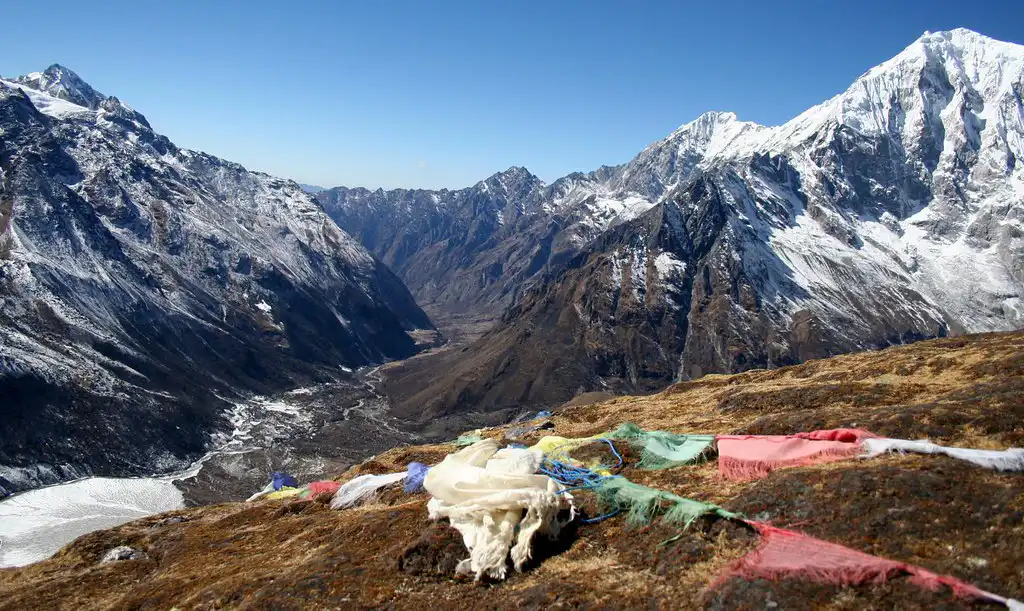
The Langtang trail is a haven for biodiversity enthusiasts. As you ascend from subtropical forests to alpine shrubs, each change in elevation introduces a new variety of plant life. This variety makes the trek a lively and engaging experience for nature lovers.
The cultures of the Tibetan and Tamang communities steep the Langtang region. Walking through the charming villages and ancient monasteries allows you to immerse yourself in local traditions and everyday life. Interactions with the hospitable locals deepen your understanding of their culture, enriching your trekking experience.
Accommodation and Meals Options
Accommodation
On the Langtang Valley Trek, you will primarily stay in teahouses, which are basic lodges operated by local families. These teahouses provide clean and comfortable rooms, typically equipped with twin beds and shared bathrooms.
In larger villages like Syabrubesi, Langtang Village, and Kyanjin Gompa, some teahouses offer enhanced amenities, such as private bathrooms and hot showers, for an additional fee. As you ascend, the facilities become simpler, often featuring just a bed, blanket, and pillow. Despite the basic accommodations, the hospitality of the teahouse owners creates a warm and welcoming atmosphere, enhancing your trekking experience.
Meals
Teahouses along the Langtang Valley Trek provide meals, ensuring trekkers have access to food throughout the trek. The menu usually includes a variety of dishes with a focus on local Nepali cuisine, such as dal bhat (lentil soup with rice), momo (dumplings), and Tibetan bread.
Many teahouses also offer international dishes like pasta, pancakes, and omelets to cater to different tastes. While fresh vegetables and fruits are available at lower altitudes, options become more limited as you climb higher into the mountains.
Permit Requirements for Langtang Valley Trek
For those planning to explore the majestic Langtang Valley, understanding the permit requirements is crucial. Peregrine Treks and Tours ensures travelers are well-informed and fully equipped with the necessary permits for a smooth trekking experience. Here’s a detailed overview of the permits needed for the Langtang Valley Trek:
Langtang National Park Permit
- Purpose: This permit is necessary for the conservation and maintenance of the Langtang National Park area. The fees contribute to preserving the park’s natural and cultural heritage.
- Where to Obtain: You can get this permit in Kathmandu at the Nepal Tourism Board office or the park entry point in Dhunche.
TIMS (Trekkers’ Information Management System) Card
- Purpose: The TIMS Card ensures the safety and security of trekkers by maintaining a record of their presence in the region. It aids in managing trekkers’ information and assists in rescue operations during emergencies.
- Where to Obtain: You can acquire the TIMS Card at the Nepal Tourism Board in Kathmandu or the Trekking Agencies Association of Nepal (TAAN) office.
Packing Essentials
Clothing
- Base Layers: Choose thermal tops and bottoms that wick moisture away.
- Mid Layers: Wear fleece or a down jacket for added insulation.
- Outer Layer: Ensure your jacket and pants are waterproof and windproof.
- Trekking Pants: Opt for lightweight, quick-drying materials.
- Trekking Shirts: Select both long-sleeve and short-sleeve shirts that wick moisture.
- Trekking Socks: Pack several pairs of wool or synthetic socks.
- Underwear: Prioritize comfort and moisture-wicking materials.
- Warm Hat: Bring a wool or synthetic hat for colder weather.
- Sun Hat: A wide-brimmed hat is essential for sun protection.
- Gloves: Include lightweight gloves for warmth and waterproof ones for protection.
Footwear
- Trekking Boots: Ensure they are well-fitted, waterproof, and well-broken-in.
- Camp Shoes: Pack lightweight sandals or sneakers for relaxation at camp.
- Gaiters: These are crucial for protection against mud and snow.
Gear
- Backpack: A 40-50 liter pack with a rain cover is ideal.
- Sleeping Bag: Choose one rated for -10°C to -15°C (14°F to 5°F).
- Trekking Poles: Adjustable poles provide support and stability.
- Headlamp: Remember, extra batteries.
- Water Bottles: Carry two 1-liter bottles or a hydration bladder.
- Water Purification: Include tablets, a filter, or a UV purifier.
- First Aid Kit: Pack basic supplies, including medication for altitude sickness.
- Personal Hygiene Items: Bring biodegradable soap, toothpaste, toothbrush, and toilet paper.
- Sun Protection: Pack sunglasses, sunscreen, and lip balm with SPF.
- Miscellaneous: Consider a camera, notebook, pen, book, map, and compass.
Langtang National Park
Established in 1976, Langtang National Park stands as the inaugural Himalayan national park of Nepal, spanning an impressive 1,710 square kilometers in the central Himalayas. The park captivates visitors with its diverse landscapes, from lush forests and expansive alpine meadows to towering, snow-capped peaks.
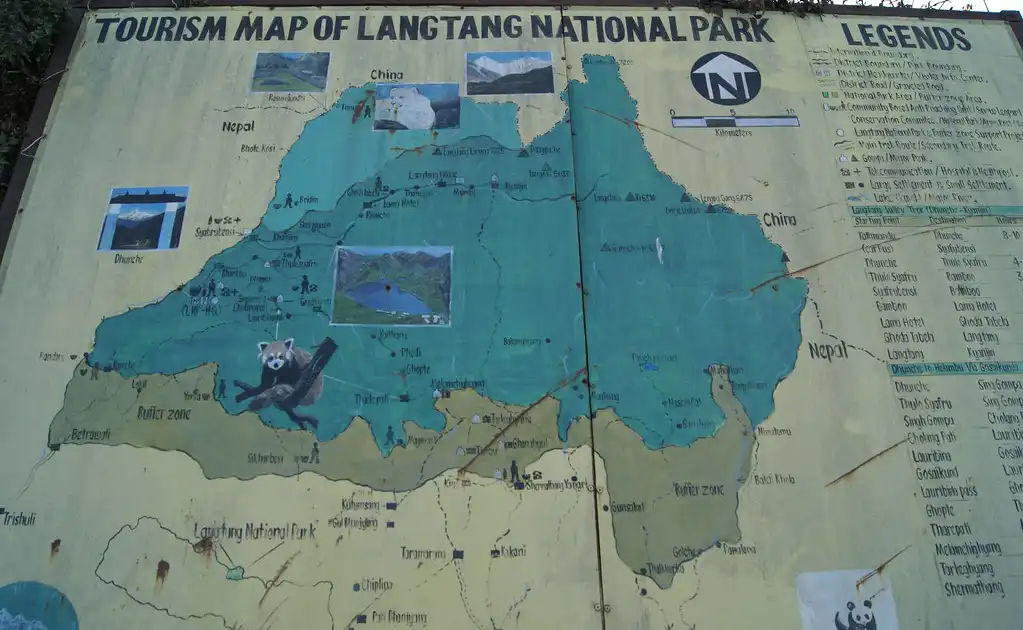
Noteworthy within the park are the sacred Gosaikunda Lake, a revered pilgrimage site, and Langtang Lirung, the park’s highest peak. These features make Langtang National Park a crucial area for conservation and a magnet for nature enthusiasts. Langtang National Park boasts a rich tapestry of biodiversity, hosting over 1,000 species of plants and 150 bird species, alongside numerous mammals such as the endangered red panda and snow leopard.
Additionally, the park encompasses several traditional Tamang villages, offering visitors a window into the enduring customs and heritage of the local communities. Trekking through Langtang National Park offers a trek through its stunning natural scenery and an engaging cultural experience within the Himalayan region.
Langtang Valley Trek Altitude
The altitude of the Langtang Valley Trek introduces a moderate challenge, rising gradually to facilitate acclimatization. Starting in Syabrubesi at approximately 1,500 meters above sea level, the trek ascends steadily.
The apex of the trek, Kyanjin Gompa, stands at around 3,870 meters. This gradual increase allows trekkers to adjust comfortably to the higher altitudes, making it an ideal choice for those new to high-altitude trekking but seeking a manageable ascent.
As trekkers ascend through the Langtang Valley, they encounter a variety of altitude-induced environmental changes, which not only challenge their physical stamina but also enrich the trekking experience. The trek transitions from lush, verdant valleys at lower elevations to the austere, majestic vistas of the high Himalayas.
The changing altitude of the Langtang Valley Trek reveals diverse ecological zones, each hosting unique flora and fauna adapted to specific altitude conditions, offering a rich and visually captivating experience.
Langtang Valley Trek Map
A Langtang Valley Trek map is indispensable for trekkers navigating the scenic Himalayan path. This map clearly outlines the trail from Syabrubesi, through Lama Hotel and Langtang village, and up to Kyanjin Gompa, the trek’s highest accessible point. It marks crucial elevation points, measures distances between stops, and pinpoints teahouses for overnight rests.
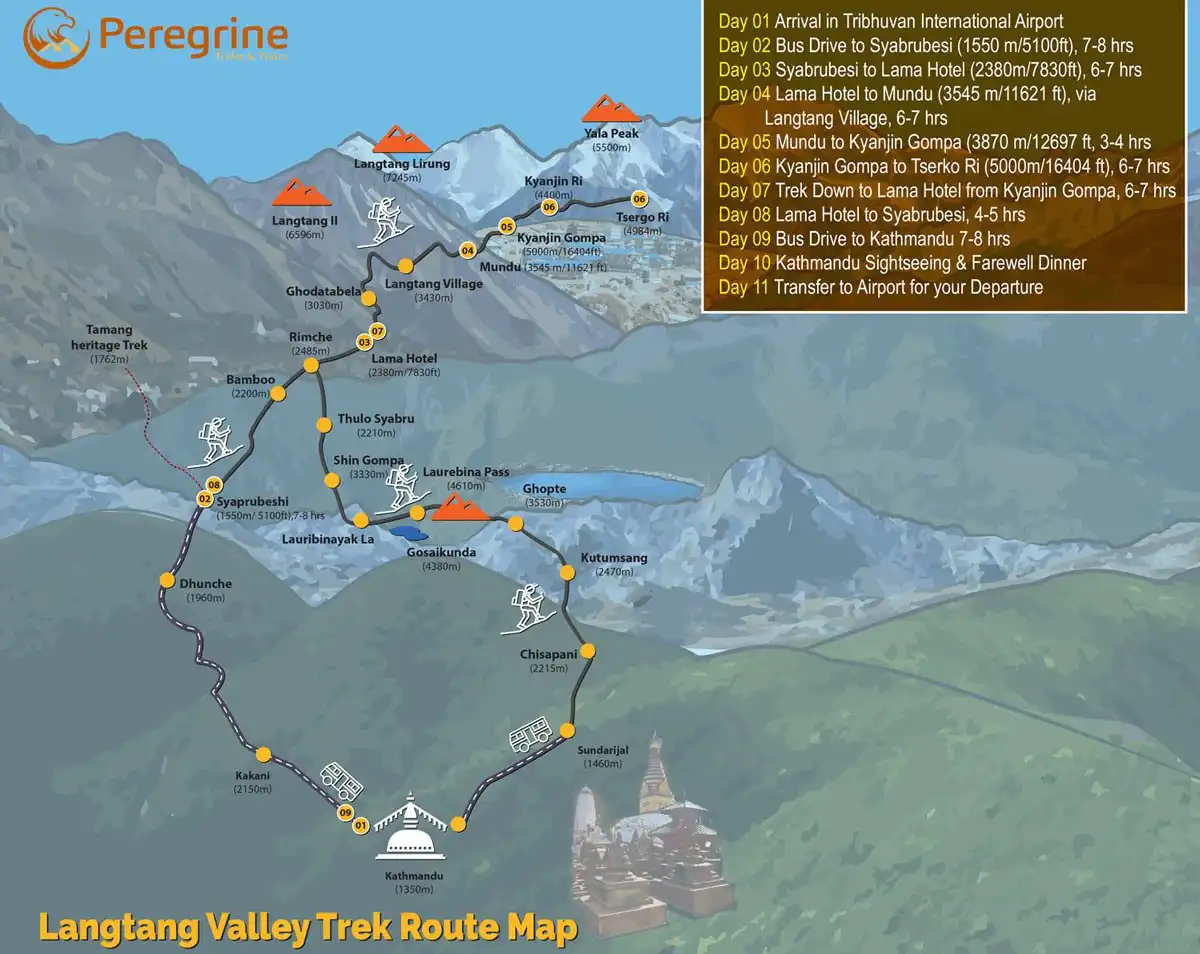
The map often includes side trails leading to popular spots like Tserko Ri or the sacred Gosaikunda lakes, offering opportunities for further exploration. Knowing how to interpret and utilize a Langtang Valley Trek map is key to successful trek planning and navigation.
The map helps trekkers measure daily distances and prepare for the day’s trip. It displays the varied terrain and altitude changes along the route, equipping trekkers with the foresight needed to tackle the physical demands of the trek. Beyond its practical use as a navigational tool, the map enriches the trekking experience by identifying important landmarks and the natural beauty of the Langtang region.
Langtang Valley Trek Cost
The cost for the Langtang Valley Trek over seven days generally ranges from $700 to $900. This budget covers all essential expenses such as food, accommodation, permits, and transportation. Trekkers will spend on meals and lodging at teahouses along the trail, which offer basic but comfortable amenities.
The cost also includes necessary permits like the Langtang National Park permit and the TIMS (Trekkers’ Information Management System) card, both required for entry and trekking in the region.
Transportation is another significant part of the Langtang Valley Trek cost for seven days. It typically involves a bus or jeep ride from Kathmandu to Syabrubesi and back. By covering these fundamental costs, trekkers can enjoy a seamless experience, focusing on stunning landscapes and rich cultural interactions without worrying about logistical details.
Langtang Valley Trek Distance
The Langtang Valley trek distance spans approximately 65 to 70 kilometers (40 to 44 miles) round trip, depending on the specific routes and optional side trips trekkers choose. The trek begins in Syabrubesi and ascends through diverse terrains, including dense forests, river valleys, and alpine meadows, ultimately reaching the highest point at Kyanjin Gompa.
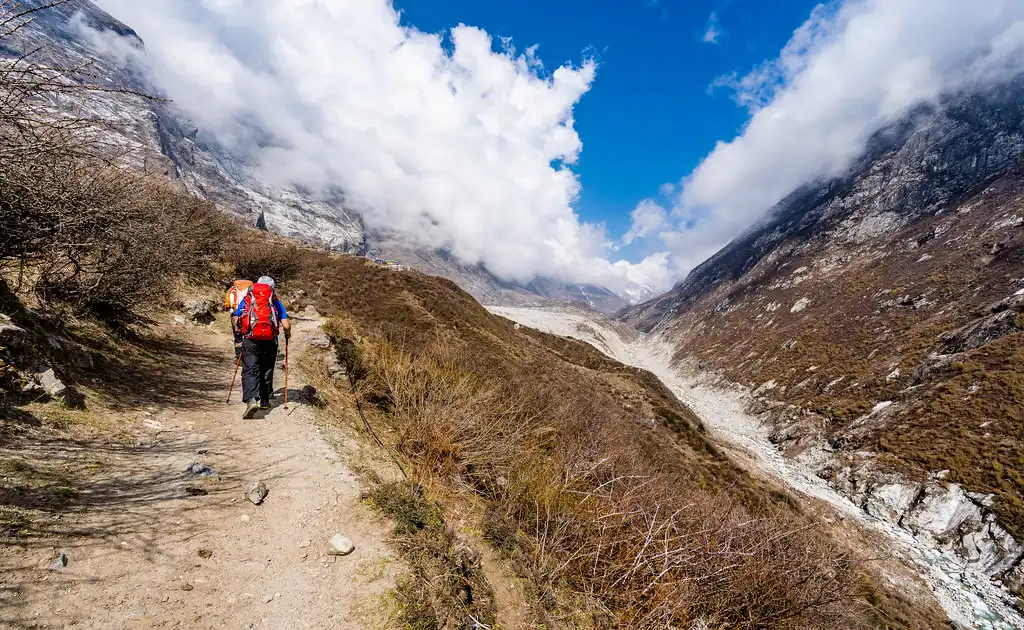
Along this path, trekkers will encounter notable landmarks such as Lama Hotel and Langtang Village, each offering unique scenic views and cultural experiences. Understanding the Langtang Valley trek distance is essential for effective planning and preparation. Typically, this distance requires 5 to 7 days to complete, allowing for a gradual ascent that aids in acclimatization.
The trek’s manageable distance and gradual elevation gain make it suitable for both novice and experienced trekkers. Additionally, side trips to viewpoints like Tserko Ri or the sacred Gosaikunda Lakes can extend the trekking distance, providing more breathtaking vistas and enriching the overall trekking experience.
Frequently Asked Questions
1. How long does the Langtang Valley Trek take?
The Langtang Valley Trek usually takes between 7 to 10 days to complete. This timeframe allows for proper acclimatization, exploration of side trails, and ample time to enjoy the natural and cultural highlights along the route.
2. Is the Langtang Trek difficult?
The Langtang Trek is considered moderately difficult. It involves several days of continuous walking, often on steep and uneven terrain. Although prior trekking experience is helpful, it is not required. Trekkers should be in good physical condition and ready for long days of hiking.
3. How high is Langtang Valley Trek?
The highest point of the Langtang Valley Trek is Kyanjin Gompa, which stands at about 3,870 meters (12,697 feet) above sea level. Trekkers also have the option to take side trips, such as hiking to Tserko Ri, which reaches an elevation of 4,984 meters (16,352 feet).
4. Is Langtang Trek for beginners?
The Langtang Trek can be suitable for beginners who are physically fit and ready to face the challenges of high-altitude trekking. Beginners should acclimatize properly and consider hiring a guide to ensure safety and enhance the trekking experience.
5. Is the Langtang trek safe?
The Langtang Trek is generally safe, especially for well-prepared trekkers who follow guidelines. Please hire a guide or join a trekking group that can further enhance safety. It is important to recognize the risks of altitude sickness and take appropriate precautions.
6. How much does it cost to hike Langtang?
The cost for a 7-day trek to hike the Langtang Valley Trek typically ranges from $700 to $900. This amount covers permits, accommodation, food, and transportation. Additional costs may arise for extra services, gear, or extended stays.
7. What is altitude sickness in the Langtang Valley?
Altitude sickness, or acute mountain sickness (AMS), occurs due to reduced oxygen levels at higher altitudes. Symptoms include headaches, nausea, dizziness, and fatigue. Trekkers can reduce the risk by ascending gradually, staying hydrated, and taking acclimatization breaks.
8. What is the difference between Annapurna and Langtang trek?
The Annapurna Trek is generally longer and offers more varied landscapes and cultural experiences, covering a larger area with higher altitudes compared to the Langtang Trek. Langtang provides a more intimate trekking experience with fewer crowds and a closer look at local Tamang culture. Both treks present unique challenges and offer stunning Himalayan views.
9. Where is Langtang Valley Located?
Langtang Valley lies in the central region of Nepal, within Langtang National Park, about 51 kilometers north of Kathmandu. Positioned near the Tibetan border, it is part of the Rasuwa District in the Bagmati Zone.
The valley is renowned for its breathtaking natural beauty and cultural richness, primarily inhabited by Tamang and Tibetan communities. Its proximity to Kathmandu makes Langtang Valley an attractive destination for trekkers seeking a blend of accessibility and the remoteness of the Himalayas.
10. How do the Trails Look from Syabrubesi to Kyanjin Gompa?
The trails from Syabrubesi to Kyanjin Gompa offer a diverse and scenic trekking experience across roughly 30 kilometers. Starting at Syabrubesi, the path ascends through lush subtropical forests along the Langtang Khola, gradually climbing to the Lama Hotel.
From there, it continues through dense forests and open meadows to Langtang Village, highlighting the valley’s stunning landscapes and cultural depth. The final stretch to Kyanjin Gompa reveals expansive alpine meadows and dramatic views of snow-capped peaks and glaciers, culminating in a serene village surrounded by towering Himalayan mountains.
Conclusion
The Langtang Valley Trek offers a memorable experience through breathtaking landscapes, from lush forests and alpine meadows to striking mountain vistas. Trekkers can enjoy highlights such as the ascent to Kyanjin Gompa, the tranquil beauty of Langtang Village, and the rich cultural heritage of the Tamang and Tibetan communities. This trek uniquely combines natural beauty and cultural immersion, making it a standout Himalayan adventure.
As you plan your Langtang Valley Trek, prepare responsibly by respecting the environment and local cultures. Proper planning and preparation will enhance your experience and help preserve this stunning region. Approach this adventure with awareness and respect, and you will find it an enriching experience.

